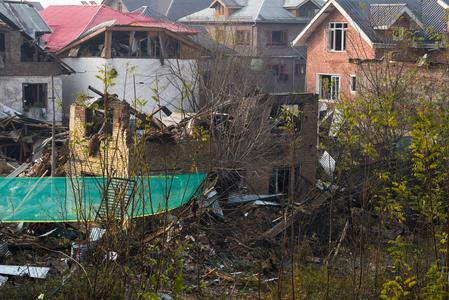
J&K Blast Reveals Potent Explosive Mix: Faridabad Module Readied High-Grade Ammonium Nitrate For Major Strikes
Officials say that the ammonium nitrate had reached a volatile stage and hence detonated on its own before the forensic teams could collect the samples.
An explosion ripped through the premises of the Nowgam police station in Jammu and Kashmir. Nine people have lost their lives in this accidental blast. Preliminary investigations suggest that the blast occurred because the ammonium nitrate was unstable. It had been converted into a high-grade explosive by the accused persons.
The ammonium nitrate was seized following raids that were conducted against the Faridabad module of the Jaish-e-Mohammed. The explosion took place when the ammonium nitrate was being handled. It was being handled with utmost care, but due to the unstable nature of the chemical, the explosion took place, officials said.
The chemical was pushed beyond the stability threshold, thus making it unstable in nature. Officials say that this batch of ammonium nitrate was at a stage where it was ready to be packed into an improvised explosive device (IED). The accused persons, while turning the ammonium nitrate into a potent explosive, had also mixed the sensitising agents as well as fuel.
The chemical was at such a stage that it had the capability of releasing massive energy even without a detonator. This indicates that the plot hatched by the Faridabad module was at a much advanced stage. Had the module not been busted, the unthinkable would have taken place.
Another official said that while looking at the profile of the chemical, it is clear that it was meant to be used in a large IED, such as vehicle-borne explosives. The members of the module were planning to transport the ammonium nitrate to Delhi and other cities.
While at first, it was said that the members of the Faridabad module were planning to carry out the attacks either on December 6 or January 26. However, looking at the volatile nature of the chemical that was seized, they had plans at a much earlier date. It would have detonated on its own had the module members stocked the ammonium nitrate for longer, officials said.
Investigators say that the members of the terror module could have tried and use the ammonium nitrate in a vehicle. However, looking at the nature of the chemicals, they could have been just stored in some crowded area, such as parking lots, markers, or at metro corridors.
The chemical would have self-detonated, resulting in massive pressure and also creating a huge fireball. This could have caused many more casualties, and experts say that it could have been worse than what the typical ammonium nitrate would have done.
The Nowgam police had cracked down on the Jaish-e-Mohammed posters that had been put up in various places. Dr. Adeel Ahmad Rather was seen putting up these posters in October, which warned of attacks on security forces and outsiders in Kashmir. Following his arrest on October 27, the police managed to crack the Faridabad module, which carried out the Delhi Red Fort blast.

Legal Disclaimer:
MENAFN provides the
information “as is” without warranty of any kind. We do not accept
any responsibility or liability for the accuracy, content, images,
videos, licenses, completeness, legality, or reliability of the information
contained in this article. If you have any complaints or copyright
issues related to this article, kindly contact the provider above.

















Comments
No comment